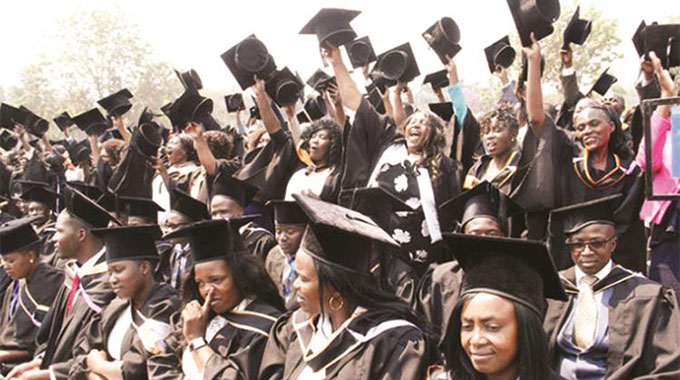Editorial Comment: Student grants will bolster education quality

In the last three decades, there has been keen interest in how education is financed, particularly in Africa.
That interest emanated from the increased acceptance that a highly-skilled human capital base can help those countries lagging behind in terms of development to catch up with the already developed nations.
That factor and the need to promote mass education for all saw the Government introduce students grants to cater for those in colleges and universities across Zimbabwe soon after independence.
From 1980 to early 2000, the Government solely funded university education with grants as the main source of student financing for the majority of those enrolled in colleges and universities across the country. Grants were seen as crucial in the process of engaging the previously disadvantaged black community.
Because of perennial droughts, lack of disposal incomes for many families and Government’s commitment to university education as an important element in national development, grants became the backbone of funding for tertiary education.
Sadly, Government scrapped the grants mainly due to non-repayment by students who had benefited from the grants. The year 2002 saw the Government introducing a new financing policy to broaden access and opportunities in higher education.
A 100 percent loan system was introduced, replacing the grant system and catered for everyone in the tertiary system whether public or private university students. The repayments were to be done upon exceeding a certain salary threshold after graduating. Collection was done through a centralised Government tax system.
The new funding system failed to spur the growth that Government had anticipated in tertiary education forcing hundreds of tertiary students to drop out of universities and colleges because they could no longer afford to pay fees.
Although there were several financial institutions and banks that could offer loans and nominal rates, the majority of students could not access these financial facilities because of requirements that one needed to fulfil. With some banks requiring collateral security in form of a payslip, or proof of stable income from any business venture, students from underprivileged families were naturally disenfranchised and could not access the money.
In the absence of solid funding structure from the Government, university administrators tried to come up with various funding options such as government work exchange programmes, sponsorship or payment plans.
Still the options were not sufficient.
We, therefore, welcome the decision by Government to re-introduce grants for students in State universities as part of a litany of measures to boost access to higher and tertiary education, while empowering people, especially the youth.
Students can start applying for the loans at the end of the month, bringing the much needed relief from both parents, guardians and parents who were struggling to pay fees, finance accommodation and food.
With this latest development, we hope to witness a decline in social vices that had become synonyms with some tertiary students, who were turning to social ills like prostitution in exchange for housing, food and money.
That mismatch in students funding resources and university requirements had also taken a toll on learning activities, as some universities were reporting a drop in the quality of education.
With the re-introduction of the grants for higher and tertiary institutions, learning institutions should now witness a peak in learning activities, since the previously disadvantaged students would now be able to focus on the core activity of learning with minimum disruptions.
Having learnt from the previous grant system where the rate of defaulting was high among former students who never repaid a dime towards the revolving fund, the onerous task that awaits the higher and tertiary education would be to set up systems that minimises defaulting.
Management of funds by setting up a thorough vetting system of the intended beneficiaries with the assistance of the higher and tertiary institutions will also help the Government to plug all possible leakages, while guaranteeing a huge repayment percentage.
The students themselves should be gently guided by the prudence to repay the grants, keeping in mind the fact that the same grant will be used to educate future generations if the revolving fund is properly managed.
We believe that the re-introduction of the grants should not signal the end of the private sector’s role in funding higher and tertiary education, but should complement’s Government efforts and ensure continuity of student’s funding.
Rather than step back, the private sector should continue to play a critical role in funding tertiary education, through public-private partnerships, joint ventures and innovative fund-raising.
Government cannot go it alone.
There is need for a multi-pronged approach by the Government, non-governmental organisations, the private sector, universities, families and students to holistically address the funding challenges of tertiary and higher education.









Comments